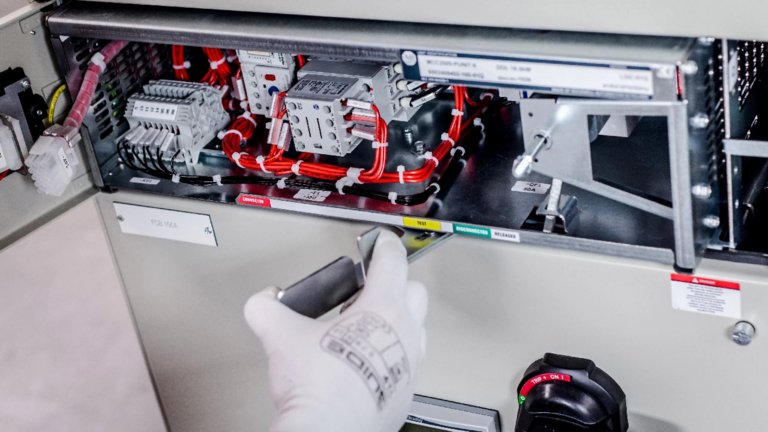Recommended For You
Safety continues to be at the forefront of industrial applications. However, a high frequency of serious electrical injuries and fatalities still occur around electrical equipment. In addition to the harm they do to workers, they also result in high monetary losses associated with damaged property and production losses.
The need for guidance in promoting the safety of both people and property through effective electrical equipment maintenance was identified many decades ago. Around 1968, the Board of Directors of the National Fire Protection Association (NFPA) authorized the formation of a new NFPA committee with representation from specialists associated with equipment manufacturers, installers, inspectors, users, maintenance contractors and engineers. Also included in the committee were representatives from safety, labor and insurance organizations along with representatives of other National Electrical Code (NEC) and NFPA Committees.
The main goal of this new committee was "to develop suitable texts relating to preventive maintenance of electrical systems and equipment used in industrial-type applications with the view of reducing loss of life and property.”
At the time the committee was created, a very high frequency of electrical accidents was attributed to the failure to perform maintenance at regular intervals or where maintenance was not done properly on electrical equipment. These electrical incidents resulted in fatalities, serious injuries and had a high monetary impact due to loss of property and production.
The committee determined that the best way to break down electrical safety information was to divide it into four topics:
- Product design or product standards
- Installation standards
- Maintenance recommendations
- Use of product instructions
Though this approach to electrical safety was first introduced in the late 1960s, it still provides good, foundational guidance for improving safety. By focusing on these four areas of electrical safety, you can feel more confident in your plan to reduce arc flash incidents.
Product design or product standards
Safety starts with product selection. Regulatory bodies such as the Occupational Safety and Health Administration (OSHA) and the NFPA both include detailed codes and regulations for electrical equipment installations. By selecting products that are designed to meet or exceed the safety standards you have selected for your facility, you can greatly increase worker safety. Our products include safety features to help protect equipment and employees, monitor performance, and help reduce unplanned outages and downtime.
Installation standards (as covered within the National Electrical Code and the National Electrical Safety Code)
The purpose of the NEC is to provide practical safeguarding of people and property from electrical hazards. Meeting that goal requires a safe and appropriate electrical installation. Article 110, within the NEC, is focused on providing the specific details around an installation that is safe for not only the installers, but also the maintenance electricians who follow.
Every equipment vendor will provide specifics around the required methods for the proper installation and electrical connections to their equipment, whether low voltage or medium voltage. Most will provide suitable spaces and grounding locations, to install the control and the line and load cable connections into a piece of electrical equipment or a lineup of switchgear or motor control centers.
However, never assume that the configurations are the same between vendors or even between equipment from the same vendor. Always refer to the installation section of the user documentation, provided by the equipment vendor, for each piece of equipment. Also, a good practice is to provide the installation details or sections from those documents to any contracted service provider before they provide a quotation for the equipment installation. This sets specific expectations for a successful installation and provides the installation-specific details.
Maintenance recommendations
Performing the correct maintenance on all the unique pieces of equipment in a facility is challenging. Equipment is often various ages, versions and from varied suppliers, which can create confusion. To avoid arc flashes, it is important to follow the maintenance instructions for each piece of equipment in the facility. Treating all pieces of equipment the same way, will cause problems. For example, older equipment designs require very different levels of maintenance than the equipment of today. Below is an extract from a user manual circa 1950:
Oil-Immersed Contactor- MAINTENANCE
The life of the oil and contacts depends primarily on the frequency of operation, and the amount of power interrupted at each operation. The presence of moisture, carbon and other foreign matter reduce the insulating qualities of the oil. Highly repetitive operations of the contactors will result in excessive formation of sludge, carbon and other contaminants. For average operating conditions, it is recommended that the oil and contacts be inspected every three months. At this time all operating parts and insulators should be wiped clean of carbon particles or other foreign materials. The contacts should be cleaned with a file or emery cloth to insure good contact. Once every six months, the oil should be filtered or replaced if excessively carbonized. New oil should have a dielectric strength of at least 22,000 volts as measured between (1) inch discs spaced 0.1 inch apart.
Switching systems of today, of course, do not rely on oil as an insulating material. Nor do vendors recommend that you clean contacts with a file or emery paper. However, even though the requirements and the time interval are clearly spelled out in the instructions provided by the vendor, rarely did that level of maintenance ever get performed. Why? Because it effectively meant a full shut down and extensive disassembly of the switching device every six months. The results where that oil fires were commonplace with many of these older style switching devices.
Use of product instructions
Selecting products designed to achieve safety standards doesn’t do a whole lot if operators disregard product-specific instructions. Just as it is important to follow specific maintenance instructions without generalizing, it is also important for operators to follow each products’ instructions. Failure to do so increases the risk of dangers, such as arc flash incidents. An assumption on a simple maintenance item, such as the expectation that generic lubricants can be used generically across all vendor products, could inject significant equipment risk.
By focusing on these four areas for electrical safety, you can feel more confident in your approach to reducing arc flash incidents.
For a product with arc flash reduction features built-in, check out the CENTERLINE 1500 medium voltage MCC.
Published December 7, 2020




